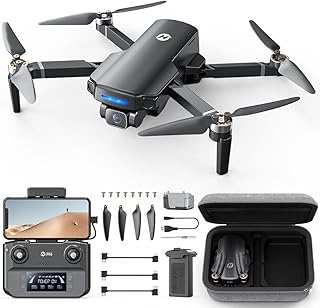Drones in Law Enforcement: Balancing Safety and Privacy
Drones are rapidly becoming a valuable tool for law enforcement agencies, offering a range of benefits such as enhanced situational awareness, rapid deployment, and cost-effectiveness. However, their use raises significant concerns about privacy and civil liberties. Striking a balance between these competing interests is crucial to ensure responsible and ethical drone deployment.
Benefits of Drones in Law Enforcement:
* Improved Situational Awareness: Drones provide real-time aerial views of crime scenes, disaster areas, and other critical incidents, enabling officers to assess the situation more effectively and make informed decisions.
* Enhanced Safety: Drones can be deployed in dangerous situations, reducing the risk to officers and civilians. They can be used for surveillance, search and rescue, and even crowd control.
* Cost-Effectiveness: Compared to traditional methods, drones offer a more affordable way to gather information and perform certain tasks.
* Improved Evidence Collection: Drones can capture high-quality images and videos that can be used as evidence in criminal investigations.
* Faster Response Times: Drones can be deployed quickly to incidents, reducing response times and potentially saving lives.
Privacy Concerns:
* Unwarranted Surveillance: Drones equipped with cameras can potentially record private conversations and activities, raising concerns about invasion of privacy.
* Data Collection and Storage: The data collected by drones, including images, videos, and location data, raises concerns about misuse, hacking, and data breaches.
* Lack of Transparency: The use of drones by law enforcement can be shrouded in secrecy, raising concerns about accountability and public oversight.
Balancing Safety and Privacy:
* Clear Policies and Regulations: Establishing clear policies and regulations for drone use, including data retention guidelines, privacy safeguards, and oversight mechanisms, is essential.
* Transparency and Accountability: Agencies should be transparent about their drone programs, disclosing their policies, procedures, and data collection practices.
* Public Input and Oversight: Encouraging public input and establishing oversight mechanisms, such as independent review boards, can help ensure responsible and ethical drone deployment.
* Privacy-Preserving Technology: Exploring privacy-preserving technologies, such as data anonymization and encryption, can mitigate privacy risks.
* Focus on Specific Needs: Drones should be used only for specific, justifiable purposes, such as crime prevention, search and rescue, or disaster response.
* Training and Education: Law enforcement officers should be adequately trained on the ethical and legal considerations of drone use, as well as best practices for privacy protection.
Conclusion:
Drones offer significant potential benefits for law enforcement, but their use must be balanced with strong privacy safeguards. By implementing clear policies, promoting transparency, and prioritizing ethical considerations, we can ensure that drones are used responsibly to enhance public safety while protecting individual rights. Ongoing dialogue and collaboration between law enforcement, policymakers, and the public are essential to navigate this complex issue and establish a framework for the responsible use of drones in the future.


